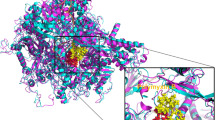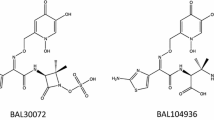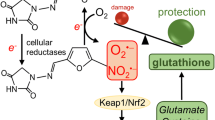Abstract
α-Amanitin plays a key role in Amanita phalloides intoxications. The liver is a major target of α-amanitin toxicity, and while RNA polymerase II (RNA Pol II) transcription inhibition is a well-acknowledged mechanism of α-amanitin toxicity, other possible toxicological pathways remain to be elucidated. This study aimed to assess the mechanisms of α-amanitin hepatotoxicity in HepG2 cells. The putative protective effects of postulated antidotes were also tested in this cell model and in permeabilized HeLa cells. α-Amanitin (0.1–20 µM) displayed time- and concentration-dependent cytotoxicity, when evaluated through the 3-(4,5-dimethylthiazol-2-yl)-2,5-diphenyl tetrazolium bromide (MTT) reduction and neutral red uptake assays. Additionally, α-amanitin decreased nascent RNA synthesis in a concentration- and time-dependent manner. While α-amanitin did not induce changes in mitochondrial membrane potential, it caused a significant increase in intracellular ATP levels, which was not prevented by incubation with oligomycin, an ATP synthetase inhibitor. Concerning the cell redox status, α-amanitin did not increase reactive species production, but caused a significant increase in total and reduced glutathione, which was abolished by pre-incubation with the inhibitor of gamma-glutamylcysteine synthase, buthionine sulfoximine. None of the tested antidotes [N-acetyl cysteine, silibinin, benzylpenicillin, and polymyxin B (PolB)] conferred any protection against α-amanitin-induced cytotoxicity in HepG2 cells or reversed the inhibition of nascent RNA caused by the toxin in permeabilized HeLa cells. Still, PolB interfered with RNA Pol II activity at high concentrations, though not impacting on α-amanitin observed cytotoxicity. New hepatotoxic mechanisms of α-amanitin were described herein, but the lack of protection observed in clinically used antidotes may reflect the lack of knowledge on their true protection mechanisms and may explain their relatively low clinical efficacy.







Similar content being viewed by others
Change history
17 April 2020
In the original publication of the article.
Abbreviations
- BSA:
-
Bovine serum albumin
- BSO:
-
Buthionine sulfoximine
- BPNC:
-
Benzylpenicillin
- DMEM:
-
Dulbecco’s modified eagle medium
- DCFH-DA:
-
2′,7′-Dichlorodihydrofluorescein diacetate
- EU:
-
5-Ethynyl uridine
- EUTP:
-
5-Ethynyl uridine-triphosphate
- HBSS:
-
Hanks’ balanced salt solution
- MMP:
-
Mitochondrial membrane potential
- MTT:
-
3-(4,5-Dimethylthiazol-2-yl)-2,5-diphenyl tetrazolium bromide
- NAC:
-
N-Acetyl cysteine
- NR:
-
Neutral red
- SIL:
-
Silibinin
- PBF:
-
Physiological buffer with Ficoll
- PBS:
-
Phosphate buffer solution
- PolB:
-
Polymyxin B
- RNA Pol II:
-
RNA polymerase II
- RS:
-
Reactive species
- ROS:
-
Reactive oxygen species
References
Abdelraouf K, Chang KT, Yin T, Hu M, Tam VH (2014) Uptake of polymyxin B into renal cells. Antimicrob Agents Chemother 58(7):4200–4202
Anderson ME (1985) Determination of glutathione and glutathione disulfide in biological samples. Methods Enzymol 113:548–555
Banerjee A, Dahiya M, Anand MT, Kumar S (2013) Inhibition of proliferation of cervical and leukemic cancer cells by penicillin G. Asian Pac J Cancer Prev 14(3):2127–2130
Brueckner F, Cramer P (2008) Structural basis of transcription inhibition by alpha-amanitin and implications for RNA polymerase II translocation. Nat Struct Mol Biol 15(8):811–818
Burkard A, Dahn C, Heinz S et al (2012) Generation of proliferating human hepatocytes using Upcyte(R) technology: characterisation and applications in induction and cytotoxicity assays. Xenobiotica 42(10):939–956
Castell JV, Jover R, Martnez-Jimnez CP, Gmez-Lechn MJ (2006) Hepatocyte cell lines: their use, scope and limitations in drug metabolism studies. Expert Opin Drug Metab Toxicol 2(2):183–212
Choppin J, Desplaces A (1979) The action of silybin on the mouse liver in alpha-amanitine poisoning. Arzneimittelforschung 29(1):63–68
Costa VM, Silva R, Ferreira R et al (2009) Adrenaline in pro-oxidant conditions elicits intracellular survival pathways in isolated rat cardiomyocytes. Toxicology 257(1–2):70–79
Dhanalakshmi S, Singh RP, Agarwal C, Agarwal R (2002) Silibinin inhibits constitutive and TNFalpha-induced activation of NF-kappaB and sensitizes human prostate carcinoma DU145 cells to TNFalpha-induced apoptosis. Oncogene 21(11):1759–1767
Enjalbert F, Rapior S, Nouguier-Soule J, Guillon S, Amouroux N, Cabot C (2002) Treatment of amatoxin poisoning: 20-year retrospective analysis. J Toxicol Clin Toxicol 40(6):715–757
Faulstich H, Jahn W, Wieland T (1980) Silybin inhibition of amatoxin uptake in the perfused rat liver. Arzneimittelforschung 30(3):452–454
Ferreira PS, Nogueira TB, Costa VM et al (2013) Neurotoxicity of "ecstasy" and its metabolites in human dopaminergic differentiated SH-SY5Y cells. Toxicol Lett 216(2–3):159–170
Fiume L, Marinozzi V, Nardi F (1969) The effects of amanitin poisoning on mouse kidney. Br J Exp Pathol 50(3):270–276
Floersheim GL (1971) Antagonistic effects to phalloidin, alpha-amanitin and extracts of Amanita phalloides. Agents Actions 2(3):142–149
Floersheim GL, Schneeberger J, Bucher K (1971) Curative potencies of penicillin in experimental amanita phalloides poisoning. Agents Actions 2(3):138–141
Garcia J, Costa VM, Baptista P, Lourdes Bastos M, Carvalho F (2015a) Quantification of alpha-amanitin in biological samples by HPLC using simultaneous UV- diode array and electrochemical detection. J Chromatogr B Anal Technol Biomed Life Sci 997:85–95
Garcia J, Costa VM, Carvalho A et al (2015b) Amanita phalloides poisoning: mechanisms of toxicity and treatment. Food Chem Toxicol 86:41–55
Garcia J, Costa VM, Carvalho AT et al (2015c) A breakthrough on Amanita phalloides poisoning: an effective antidotal effect by polymyxin B. Arch Toxicol 89(12):2305–2323
Garcia J, Costa VM, Bovolini A et al (2019) An effective antidotal combination of polymyxin B and methylprednisolone for alpha-amanitin intoxication. Arch Toxicol 93(5):1449–1463
Gomes A, Fernandes E, Lima JLFC (2005) Fluorescence probes used for detection of reactive oxygen species. J Biochem Biophys Methods 65(2):45–80
Gundala S, Wells LD, Milliano MT, Talkad V, Luxon BA, Neuschwander-Tetri BA (2004) The hepatocellular bile acid transporter Ntcp facilitates uptake of the lethal mushroom toxin alpha-amanitin. Arch Toxicol 78(2):68–73
Hammond CL, Lee TK, Ballatori N (2001) Novel roles for glutathione in gene expression, cell death, and membrane transport of organic solutes. J Hepatol 34(6):946–954
Ichihara S, Kikuchi R, Kusuhara H, Imai S, Maeda K, Sugiyama Y (2010) DNA methylation profiles of organic anion transporting polypeptide 1B3 in cancer cell lines. Pharm Res 27(3):510–516
Jaeger A, Jehl F, Flesch F, Sauder P, Kopferschmitt J (1993) Kinetics of amatoxins in human poisoning: therapeutic implications. J Toxicol Clin Toxicol 31(1):63–80
Kaplan CD, Larsson KM, Kornberg RD (2008) The RNA polymerase II trigger loop functions in substrate selection and is directly targeted by alpha-amanitin. Mol Cell 30(5):547–556
Kroemer G, Galluzzi L, Vandenabeele P et al (2009) Classification of cell death: recommendations of the Nomenclature Committee on Cell Death 2009. Cell Death Differ 16(1):3–11
Kroncke KD, Fricker G, Meier PJ, Gerok W, Wieland T, Kurz G (1986) alpha-Amanitin uptake into hepatocytes. Identification of hepatic membrane transport systems used by amatoxins. J Biol Chem 261(27):12562–12567
Kudo M, Katayoshi T, Kobayashi-Nakamura K, Akagawa M, Tsuji-Naito K (2016) H+/peptide transporter (PEPT2) is expressed in human epidermal keratinocytes and is involved in skin oligopeptide transport. Biochem Biophys Res Commun 475(4):335–341
Le Vee M, Jigorel E, Glaise D, Gripon P, Guguen-Guillouzo C, Fardel O (2006) Functional expression of sinusoidal and canalicular hepatic drug transporters in the differentiated human hepatoma HepaRG cell line. Eur J Pharm Sci 28(1–2):109–117
Lee KB, Wang D, Lippard SJ, Sharp PA (2002) Transcription-coupled and DNA damage-dependent ubiquitination of RNA polymerase II in vitro. Proc Natl Acad Sci USA 99(7):4239–4244
Leist M, Gantner F, Bohlinger I, Germann PG, Tiegs G, Wendel A (1994) Murine hepatocyte apoptosis induced in vitro and in vivo by TNF-alpha requires transcriptional arrest. J Immunol 153(4):1778–1788
Leist M, Gantner F, Naumann H et al (1997) Tumor necrosis factor-induced apoptosis during the poisoning of mice with hepatotoxins. Gastroenterology 112(3):923–934
Letschert K, Faulstich H, Keller D, Keppler D (2006) Molecular characterization and inhibition of amanitin uptake into human hepatocytes. Toxicol Sci 91(1):140–149
Lindell TJ, Weinberg F, Morris PW, Roeder RG, Rutter WJ (1970) Specific inhibition of nuclear RNA polymerase II by alpha-amanitin. Science 170(3956):447–449
Linnett PE, Beechey RB (1979) Inhibitors of the ATP synthetase systems methods in enzymology, vol 55. Academic Press, New York, pp 472–518
Lowry OH, Rosebrough NJ, Farr AL, Randall RJ (1951) Protein measurement with the Folin phenol reagent. J Biol Chem 193(1):265–275
Magdalan J, Ostrowska A, Piotrowska A, Gomulkiewicz A, Szelag A, Dziedgiel P (2009a) Comparative antidotal efficacy of benzylpenicillin, ceftazidime and rifamycin in cultured human hepatocytes intoxicated with alpha-amanitin. Arch Toxicol 83(12):1091–1096
Magdalan J, Ostrowska A, Piotrowska A et al (2009b) Failure of benzylpenicillin, N-acetylcysteine and silibinin to reduce alpha-amanitin hepatotoxicity. Vivo 23(3):393–399
Magdalan J, Ostrowska A, Piotrowska A et al (2010) Benzylpenicillin, acetylcysteine and silibinin as antidotes in human hepatocytes intoxicated with alpha-amanitin. Exp Toxicol Pathol 62(4):367–373
Matinkhoo K, Pryyma A, Todorovic M, Patrick B, Perrin D (2018) Synthesis of the death-cap mushroom toxin α-amanitin. J Am Chem Soc 140(21):6513–6517
Mitsui A, Sharp PA (1999) Ubiquitination of RNA polymerase II large subunit signaled by phosphorylation of carboxyl-terminal domain. Proc Natl Acad Sci USA 96(11):6054–6059
Molavi O, Narimani F, Asiaee F et al (2017) Silibinin sensitizes chemo-resistant breast cancer cells to chemotherapy. Pharm Biol 55(1):729–739
Mosmann T (1983) Rapid colorimetric assay for cellular growth and survival: application to proliferation and cytotoxicity assays. J Immunol Methods 65(1–2):55–63
Mydlik M, Derzsiova K, Frank K (2013) Renal replacement therapy in acute poisonings–one center experience. Przegl Lek 70(6):381–385
Neftel KA, Hubscher U (1987) Effects of beta-lactam antibiotics on proliferating eucaryotic cells. Antimicrob Agents Chemother 31(11):1657–1661
Nemes Z, Dietz R, Lüth JB, Gomba S, Hackenthal E, Gross F (1979) The pharmacological relevance of vital staining with neutral red. Experientia 35(11):1475–1476
Nguyen VT, Giannoni F, Dubois MF et al (1996) In vivo degradation of RNA polymerase II largest subunit triggered by alpha-amanitin. Nucleic Acids Res 24(15):2924–2929
Perry SW, Norman JP, Barbieri J, Brown EB, Gelbard HA (2011) Mitochondrial membrane potential probes and the proton gradient: a practical usage guide. Biotechniques 50(2):98–115
Poucheret P, Fons F, Dore JC, Michelot D, Rapior S (2010) Amatoxin poisoning treatment decision-making: pharmaco-therapeutic clinical strategy assessment using multidimensional multivariate statistic analysis. Toxicon 55(7):1338–1345
Ramasamy K, Agarwal R (2008) Multitargeted therapy of cancer by silymarin. Cancer Lett 269(2):352–362
Repetto G, del Peso A, Zurita JL (2008) Neutral red uptake assay for the estimation of cell viability/cytotoxicity. Nat Protoc 3(7):1125–1131
Saliou C, Rihn B, Cillard J, Okamoto T, Packer L (1998) Selective inhibition of NF-kappaB activation by the flavonoid hepatoprotector silymarin in HepG2. Evidence for different activating pathways. FEBS Lett 440(1–2):8–12
Singh RP, Mallikarjuna GU, Sharma G et al (2004) Oral silibinin inhibits lung tumor growth in athymic nude mice and forms a novel chemocombination with doxorubicin targeting nuclear factor kappaB-mediated inducible chemoresistance. Clin Cancer Res 10(24):8641–8647
Soldatow VY, Lecluyse EL, Griffith LG, Rusyn I (2013) In vitro models for liver toxicity testing. Toxicol Res 2(1):23–39
Steurer B, Janssens RC, Geverts B et al (2018) Live-cell analysis of endogenous GFP-RPB1 uncovers rapid turnover of initiating and promoter-paused RNA Polymerase II. Proc Natl Acad Sci USA 115(19):E4368–e4376
Tan HWS, Sim AYL, Long YC (2017) Glutamine metabolism regulates autophagy-dependent mTORC1 reactivation during amino acid starvation. Nat Commun 8:338
Tavassoli M, Afshari A, Arsene AL et al (2019) Toxicological profile of Amanita virosa—a narrative review. Toxicol Rep 6:143–150
Tyagi AK, Agarwal C, Chan DC, Agarwal R (2004) Synergistic anti-cancer effects of silibinin with conventional cytotoxic agents doxorubicin, cisplatin and carboplatin against human breast carcinoma MCF-7 and MDA-MB468 cells. Oncol Rep 11(2):493–499
van Tonder A, Joubert AM, Cromarty AD (2015) Limitations of the 3-(4,5-dimethylthiazol-2-yl)-2,5-diphenyl-2H-tetrazolium bromide (MTT) assay when compared to three commonly used cell enumeration assays. BMC Res Notes 8:47
Vogel G, Tuchweber B, Trost W, Mengs U (1984) Protection by silibinin against Amanita phalloides intoxication in beagles. Toxicol Appl Pharmacol 73(3):355–362
Wang D, Bushnell DA, Westover KD, Kaplan CD, Kornberg RD (2006) Structural basis of transcription: role of the trigger loop in substrate specificity and catalysis. Cell 127(5):941–954
Weinmann R, Roeder RG (1974) Role of DNA-dependent RNA polymerase III in the transcription of the tRNA and 5S RNA genes. Proc Natl Acad Sci USA 71(5):1790–1794
Winckler J (1974) Vitalfärbung von Lysosomen und anderen Zellorganellen der Ratte mit Neutralrot vital staining of lysosomes and other cell organelles of the rat with neutral red. Prog Histochem Cytochem 6(3):III-89
Wlcek K, Koller F, Ferenci P, Stieger B (2013) Hepatocellular organic anion-transporting polypeptides (OATPs) and multidrug resistance-associated protein 2 (MRP2) are inhibited by silibinin. Drug Metab Dispos 41(8):1522–1528
Xu J, Oda S, Yokoi T (2018) Cell-based assay using glutathione-depleted HepaRG and HepG2 human liver cells for predicting drug-induced liver injury. Toxicol in vitro 48:286–301
Zheleva A, Tolekova A, Zhelev M, Uzunova V, Platikanova M, Gadzheva V (2007) Free radical reactions might contribute to severe alpha amanitin hepatotoxicity-a hypothesis. Med Hypotheses 69(2):361–367
Zhu C, Hu W, Wu H, Hu X (2014) No evident dose-response relationship between cellular ROS level and its cytotoxicity—a paradoxical issue in ROS-based cancer therapy. Sci Rep 4:5029
Acknowledgements
We want to acknowledge Professor Marteijn from Erasmus Medical Center, Rotterdam, Netherlands for the RPB1-GFP cell line. This work was supported by FEDER funds through the Operational Programme for Competitiveness Factors – COMPETE and by national funds by the FCT within the project PTDC-DTP-FTO-4973-2014 – POCI-01-0145-FEDER 016545. This work was also supported by the Applied Molecular Biosciences Unit – UCIBIO through UID/MULTI/04378/2019 support with funding from FCT/MCTES through national funds. VMC acknowledges Fundação da Ciência e Tecnologia (FCT) for her grant (SFRH/BPD/110001/2015) that was funded by national funds through FCT – Fundação para a Ciência e a Tecnologia, I.P., under the Norma Transitória – DL57/2016/CP1334/CT0006.
Author information
Authors and Affiliations
Corresponding authors
Ethics declarations
Conflict of interest
There are no conflicts of interest to declare.
Additional information
Publisher's Note
Springer Nature remains neutral with regard to jurisdictional claims in published maps and institutional affiliations.
Rights and permissions
About this article
Cite this article
Rodrigues, D.F., Pires das Neves, R., Carvalho, A.T.P. et al. In vitro mechanistic studies on α-amanitin and its putative antidotes. Arch Toxicol 94, 2061–2078 (2020). https://doi.org/10.1007/s00204-020-02718-1
Received:
Accepted:
Published:
Issue Date:
DOI: https://doi.org/10.1007/s00204-020-02718-1




